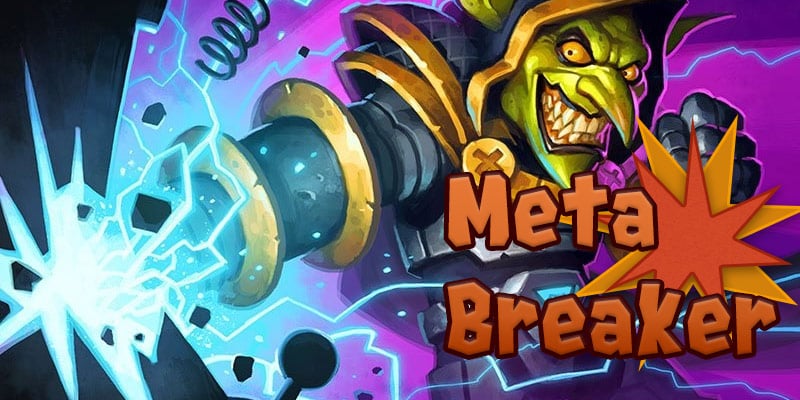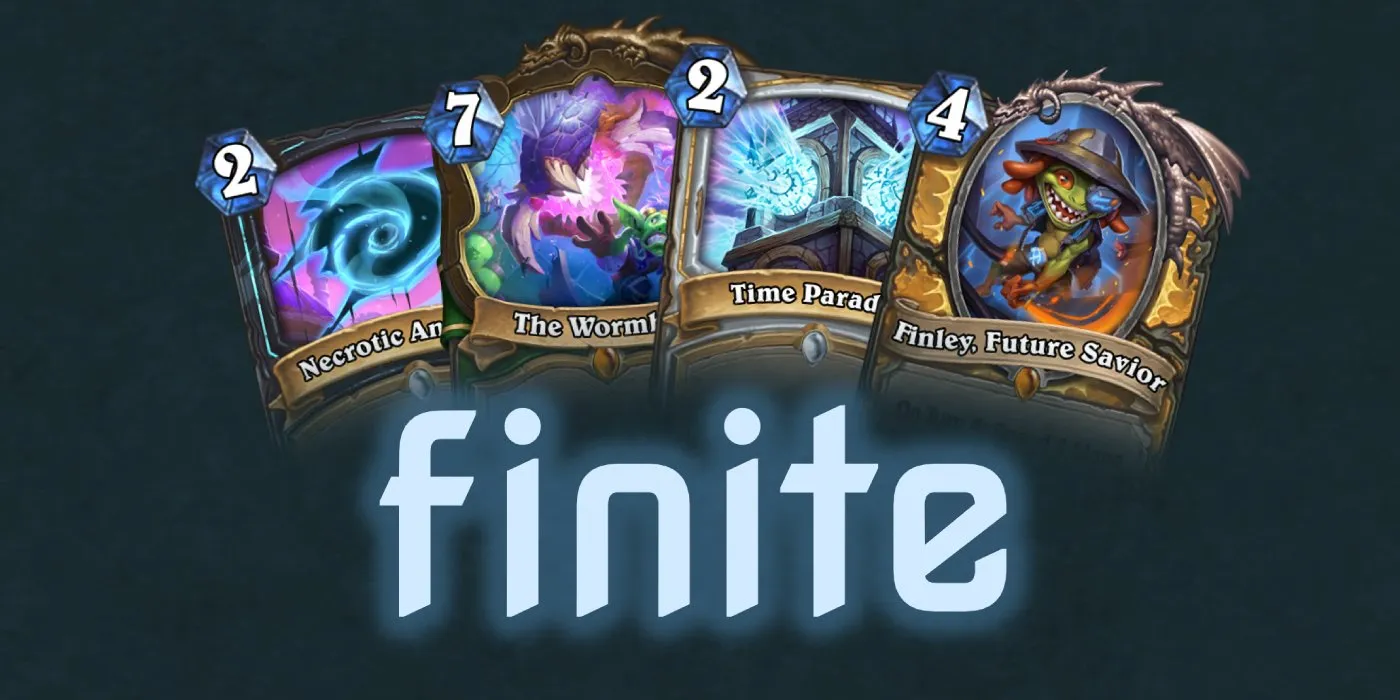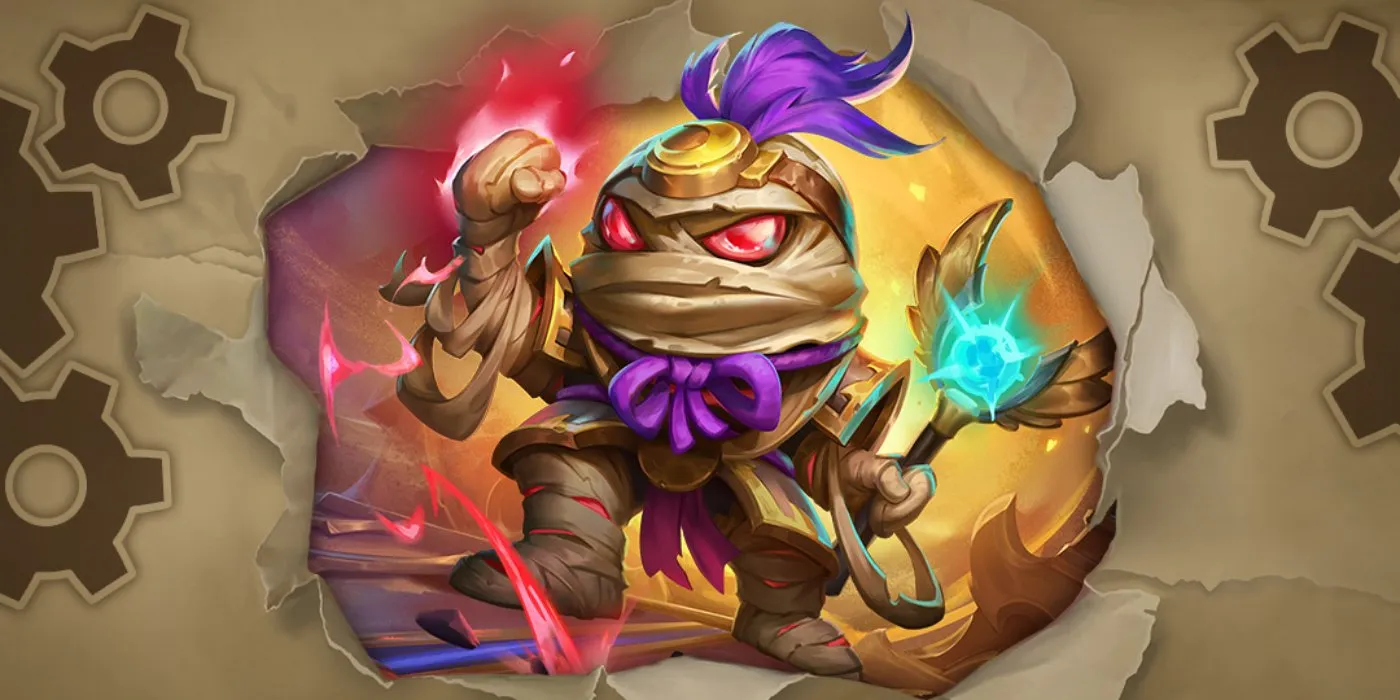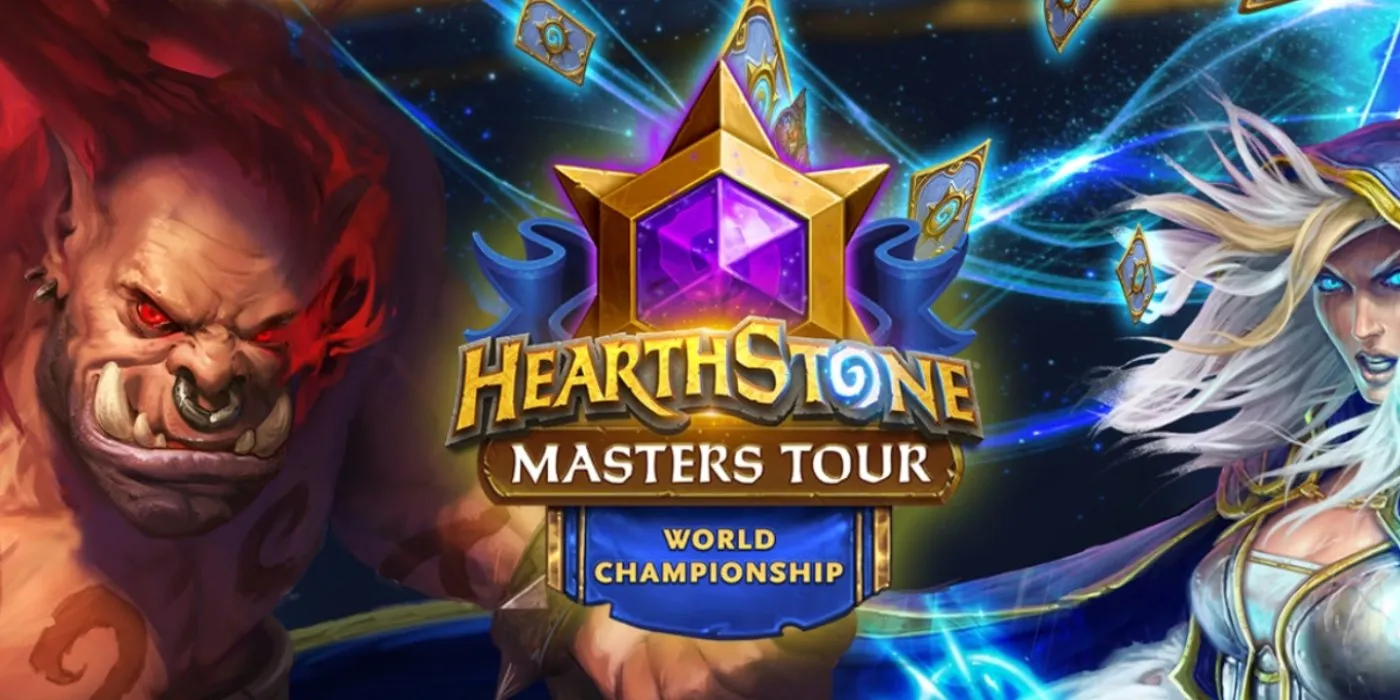Greetings, friend.
Hey all, and welcome back to another edition of Meta Breaker. In this article series, I build a deck to take down the strongest deck(s) in the field. Although Descent of Dragons is on the horizon, they won’t be descending for a while, and we’ve got a relatively stable metagame to attack. Mostly the same characters rule the meta as two weeks ago - HSReplay has Highlander Paladin, Murloc Shaman, and Highlander Hunter at Tier 1. Since we’ve got a more predictable metagame and we’ve seen pretty much all these guys before, we’re going to try something different: Today we’re going to build a deck that tries to counter all three of these guys at once! I think it’s time for some...
200 IQ Big Brain Analysis
Let’s take a look at these bad boys:
Now when you’re building a deck that counters multiple different archetypes, here are the main questions you want to ask yourself:
- How similar are their gameplans? There’s likely to be some overlap in gameplans between at least some of the decks. It’s pretty clear why this is important- the more similar they are, the more susceptible they are to being weak to a single strategy.
- Any specific card overlap? This is usually going to be limited to neutral cards unless you have a meta with one class having multiple tier 1 decks. Still, if certain neutral cards are seeing play in numerous different strategies, it’s helpful to note which ones those are and make sure your deck has a plan to deal with them.
- Which decks punish bad matchups the most? What I mean by this is- let’s say we’re playing in Un’Goro meta before the nerf of The Caverns Below, and Quest Rogue is on the list of decks you’d like to beat. Well back then, the only real way to beat Quest Rogue was to rush them down before they completed the quest, and if your deck wasn’t fast enough to do that, the matchup was pretty much an auto-loss. This means that in this scenario, you’d prioritize Quest Rogue over your other matchups and make sure you at least have a fighting chance. In general, we want to build towards the most polarizing matchups first to ensure we get decent matchups across the board.
So let’s see how these questions stack up against our current cast of enemy decks:
- How similar are their gameplans? Quite similar. All three decks have low curves and aggressive, curve-oriented gameplans. Murloc Shaman, in particular, is one of the most aggressive decks in the meta. Hunter and Paladin are both Highlander decks but still aim to close out the game by turn 7 or 8.
- Any specific card overlap? Not much, besides staples. Hunter and Paladin are both Highlander and thus have Zephrys, but besides that, they only share some staple neutral legendaries like SN1P-SNAP and Zilliax.
- Which decks punish bad matchups the most? I think it’s pretty clearly Murloc Shaman here. If you don’t have a good enough early game to keep their swarm under control, you’ll die to Bloodlust before you get your foot in the door. Luckily, we also want to focus on the early game vs. the other two decks as well, so prepping for Murloc Shaman won’t be a massive sacrifice in the other matchups.
The Build
We’re in luck! These three decks are pretty similar and can be attacked via similar avenues. While Shaman and Paladin are most susceptible to a control deck with lots of AoE, Hunter has a lot of extra reach/face damage and tends to beat up on control decks that don’t also run a lot of healing. Instead, I’d like to fight fire with fire and play an aggressive deck that can outmuscle these guys in the early game. Let’s start with this guy, the crusher of aggro dreams:
Warrior as a class has a lot of tools to combat these decks- Rush minions, armor gain, removal. We can race them well, or we can also try to control the board and win via card advantage. Since we’re playing against a field that also includes decks with insane late-game (Quest Druid/Priest/Shaman), it’s in our best interest to make sure we have some ways of closing out the game. In that case, why not make use of Warrior’s Quest?
So here’s our starting core:
- 2 Eternium Rover - Trades super well with early aggressive minions and keeps you healthy. Pretty much the reason we want to play Warrior in this meta- it trades super well with Paladins and Shamans and keeps us healthy against Hunter.
- 1 Hack the System - Can help us close out games we’d otherwise have little business winning. We should expect to complete the Quest sometime between turns 7-8, and hopefully, the surge of Golems should help us finish the opponent off soon after.
Completing the Quest
- 2 Upgrade! - The fastest method for completing the quest- you’d be surprised how often we want to play this for the 1/3 weapon. With the coin, you can theoretically complete the quest by turn 5, which leads to a massive mid-game power spike. It’s, of course, also useful for getting extra charges of our heavy-hitting weapons.
- 2 Livewire Lance - Super strong in almost every matchup. Either clears the early board or gets in some face damage. Lackeys are super strong as always, even in this deck without many ways to take extra advantage of them. This is also a great Upgrade target.
- 2 Wrenchcalibur - Also a very good Upgrade target. This can potentially account for up to 16 face damage all by itself, which is very good. Even if it just clears a couple minions, it’ll all be worth it if the opponent draws even one Bomb. The Bombs also have the added bonus of messing up your opponent’s Highlander cards.
- 1 Sul'thraze - Almost auto-completes the Quest by itself, and allows you to summon a bunch of Golems in one turn after you do. Not very good in multiples, so we only have one copy, but it’s a big part of the deck’s late game, and by itself can also give you very good board control.
Keeping control of the early board
- 2 Town Crier - Eternium Rover is great, but it also doesn’t hurt to use Warrior’s other fantastic 1-drop. Rush creatures do great against decks that have a lot of small creatures as board presence, and that’s mostly what we’re dealing with here. Town Crier is also basically a staple in most Warrior decks at this point.
- 2 Restless Mummy - Pretty much a Warrior staple. Dealing 3 damage twice, with the option to split it up between minions, is a great deal for 4 mana. It’s also nice to just run it out there and go face with a sticky threat sometimes.
- 2 Rabid Worgen - Worgen is definitely a solid card, but we mostly include it because it keeps our Town Crier online and helps fill out the 3-drop slot in our curve.
- 1 Redband Wasp - I think this card’s quite good in this meta. There are a lot of random 1/1s running around on the early turns, and this is a nice way to clear those out and end up with a solid threat. Can randomly cheese some wins with a ton of face damage on turn 3-4.
Refueling our hand
- 2 Battle Rage - Our ideal scenario for the early turns of a game against the Big Three usually goes like this: we trade into their 1/1s with cheap efficient, leaving us with a solid board presence of damaged minions. Seems like the perfect follow-up, no?
- 2 Questing Explorer - The deck needed another 2-drop. I’m choosing this one over Temple Berserker because this deck needs a bit more card draw to ensure it can consistently complete the Quest by turn 7-8.
Closing out games
- 2 Kor'kron Elite - Warrior, unlike a class like Hunter, can be tricky to build aggressive decks for at times because their Hero Power doesn’t do anything to close out the game against a Control deck that stabilized the board. As such, all the remaining cards we include in this package will help us deal additional face damage when we’ve transitioned from the board control portion of the game.
- 2 Execute- Even though none of the Big Three run a lot of big minions, there are a lot of Tier 2 decks out there running big taunts that shut us down. That’s why we bring this so we can punch through those Taunts and go back to happily SMOrcing.
- 1 Spellbreaker- In a similar vein, this deals with problem Taunts and random other annoying effects.
- 1 Leeroy Jenkins - We only get to run 1 Fireball, but we’ll take it.
- 2 Clockwork Goblin - This is partly because I wanted another 3-drop for the curve, but it’s also nice that this can randomly win you games by hitting your opponent for 5 sometimes. Also contributes to shutting down Highlander in conjunction with Wrenchcalibur.
- 1 Captain Greenskin - Finally, getting another Upgrade effect on a semi-efficient body can help us get that final tick on the Quest or finish off the opponent. We also happen to be running a lot of Weapons that are great to Upgrade.
Let’s see what the deck looks like overall:
Testing
Let’s see how the deck fared on the ladder!

So the first thing to note here is that the meta seems pretty diverse archetype-wise- I only played against one of the three boogeymen once! That said, Shaman and Paladin appeared to be the most common. It’s also worth noting that I was able to end a fair number of games on turn 9. This would usually happen to be 2-3 turns after I completed the Quest. So I definitely feel like the deck’s overall gameplan, and composition happens to be pretty strong.
Another thing to point out is that although we’re often able to close out games quickly if our early turns go well, if we fall behind and the opponent stabilizes the board, we’re often not able to come back despite the reach tools we put in the deck (check those 2 games we got wrecked by a magnetized Zilliax). This means we might either want to lower our curve even more and become a straight-up face deck, or we could cut some cards that are only useful in the early game and try to include some slightly slower early tools that scale better into the late game. Here are some potential directions I could see this deck going:
- -1 Hack the System, -2 Upgrade!, -2 Questing Explorer, -1 Captain Greenskin, +2 Temple Berserker, +1 Rampage, +2 Inner Rage, +1 Redband Wasp: Turning the deck into a true face deck that just tries to run opponents over.
- -2 Kor'kron Elite, -1 Leeroy Jenkins, +2 Armored Goon, +1 Blastmaster Boom: Becoming a solid midrange deck- Boom gives you a lot more board presence, and Armored Goon can do a lot to help you stabilize in a racing situation.
That’s all for this week, folks - I look forward to the coming weeks before the Dragons come in and burninate everything. How would you change this week’s deck, and what do you think about the current meta? Let us know in the comments below.






Comments
Interestimg but only one game vs each of the big tier decks. Im hoping for more testing. I have all the cards including the alternatives provided here so i might give it a spin
You're totally right- ideally I'd love to sit down with a friend and get some specific matchup testing in. Unfortunately as a college student during exam season it's been difficult for me to find time, and I've had to settle for ten ladder games. Definitely owe the readers an apology- will of course expand the quality of my testing when time allows.
Thank you for reading!
hey i totally get it, plus in ten games you faced 3 shamans which is exactly like the reports say 30% of the meta.
Its an interesting time to try out the quest. i dont have much time myself. got to play one match now just before bed. faced a highlander hunter and won. both explorers provided insane tempo with draw. i played a version with Blastmaster. he conceded on turn 7 when i played him after an upgraded wrenchcalibur.
will tinker with this deck until battlegrounds open beta and LoR preview patch. Thanks for sharing your experience here.
Man I cannot wait until zuljin rotates out of standard, every time I see a hunter deck with him in it I dont see a hunter deck with zuljin in it I see a zuljin deck with other cards because they're all the same package. And it's not just hunter I hate "auto include package" for any class druid in KFT where to just swap out the win condition like a lightbulb is just as shitty, it's the shudderwock mentality where you just play "these cards" and then play this other card and you'll win its lazy deckbuilding
Thanks for sharing your thoughts!
My personal thoughts- I don't feel that Zul'Jin is an auto-include in Hunter. Yes, it very often wins you the game when played, but any 10-mana card has risks associated with it, and will often be a dead draw in the critical early turns of the game. I also think that while you very often include cards in packages with Zul'Jin, there's a lot of customization options that make Zul'Jin decks very interesting to build.
About the Shudderwock-esque designs- I personally feel they are good for the game in small numbers. Having a large payoff card helps enable unique strategies, which encourages deck and archetype diversity. Even though Shudderwock encourages you to run a lot of Battlecry minions, there are a whole lot of those to choose from, which gives you a lot of choice when building your deck even though you're mostly limited to a specific pool of minions. My biggest complaint with these types of "replay" cards is actually the length that their animations can take, haha.
It's always nice to provide insights and inspirations like this. Nice work, mate!
Love this article, keep going :)